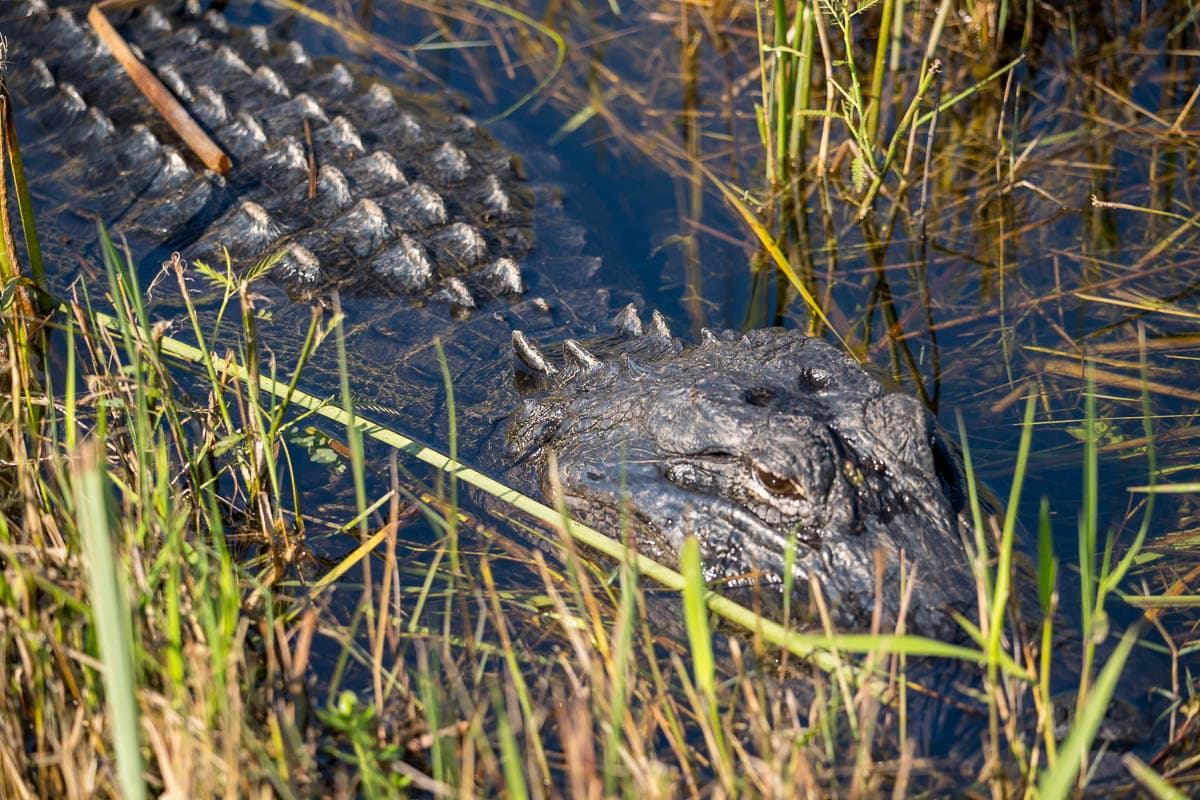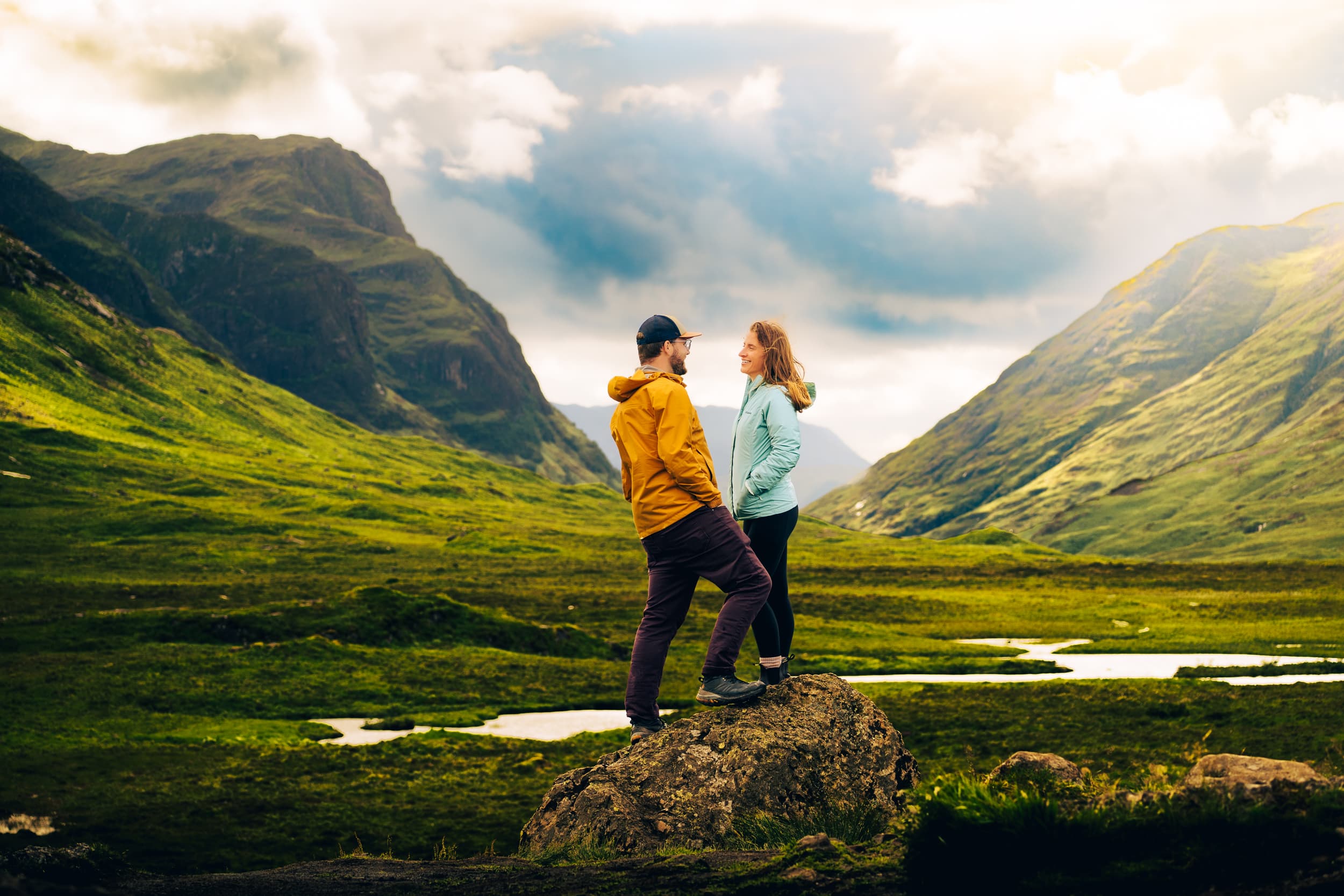Everglades National Park has a number of claims to fame, from being one of the world’s largest wetlands to housing an astonishing volume of plant and animal life. And as the third largest national park in the Lower 48, it’s no surprise there’s TONS of awesome ways to explore its natural beauty. Here’s 9 incredible things to do in Everglades National Park to make the most of your time in this unique place.
This post may contain affiliate links. If you make a purchase through them, we may receive a small commission, for which we are extremely grateful, at no extra cost to you.
How to get to Everglades National Park
Everglades National Park sprawls for a mind-blowing 7,800 square miles, across the southern tip of Florida. Its land is a unique mixture of swamp, wetlands, grasslands, and prairie, making much of the park inaccessible by car or on foot.
The closest big city to the Everglades is Miami, which is situated about an hour east of the park. Otherwise, the park is approximately four hours from Orlando, Tampa, and Cape Canaveral.
Unlike some national parks, there’s no shuttles to get around the Everglades, so you’ll generally need your own vehicle to get to and around the park. However, there’s a number of guided tours you can take from Miami, like this full-day tour, if getting a car doesn’t make sense for your trip or isn’t in the budget.
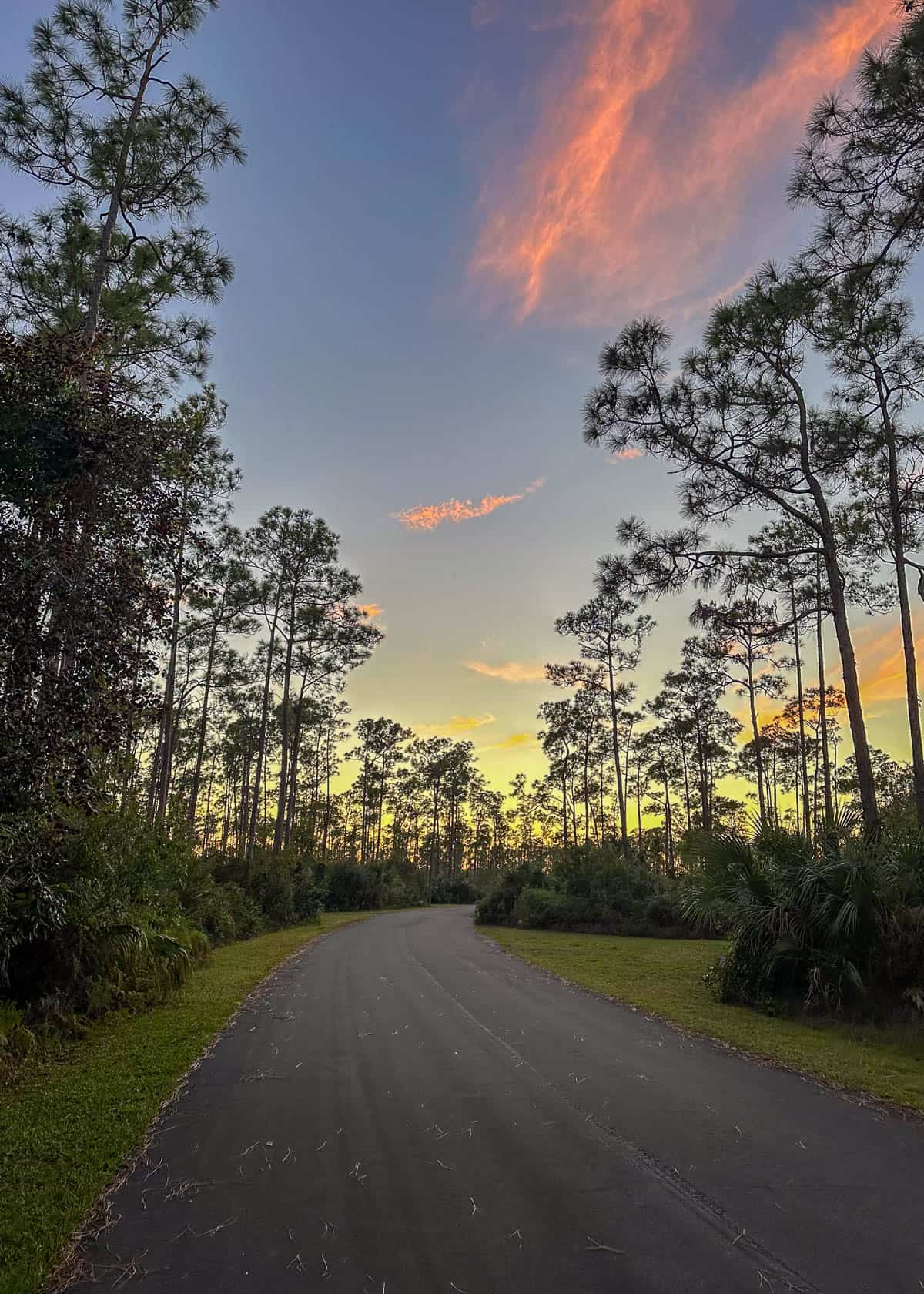
Given the Everglades’ impressive size, the park is roughly broken up into four sections:
- The Ten Thousand Islands section on the western side of the park, accessible from Everglades City,
- The Shark Valley section on the northern side of the park, accessible from Miami,
- The Royal Palm section is in the central area, accessible from Homestead, and
- The Flamingo section along the southern shoreline, also accessible from Homestead.
Other than Royal Palm and Flamingo, these areas are not connected within the park itself, so it can take over two hours to drive between them. Accordingly, I’d suggest mapping out the activities you’re interested in before your visit so you don’t spend hours and hours driving around!
Regardless of what entrance you choose, there’s a $35 entrance fee per private vehicle that’s good for up to a week in the national park. Alternatively, you can pick up an America the Beautiful pass, which, for $80, gets you into all of the U.S. National Parks and over 2,000 federally managed sites for free for an entire year!
Things to do in Everglades National Park
Things to do near the Royal Palm section
1. Walk along the Anhinga Trail
One of the best things to do in Everglades National Park, especially if you’re a wildlife lover, is to hike along the flat, 0.8 mile long Anhinga Trail.
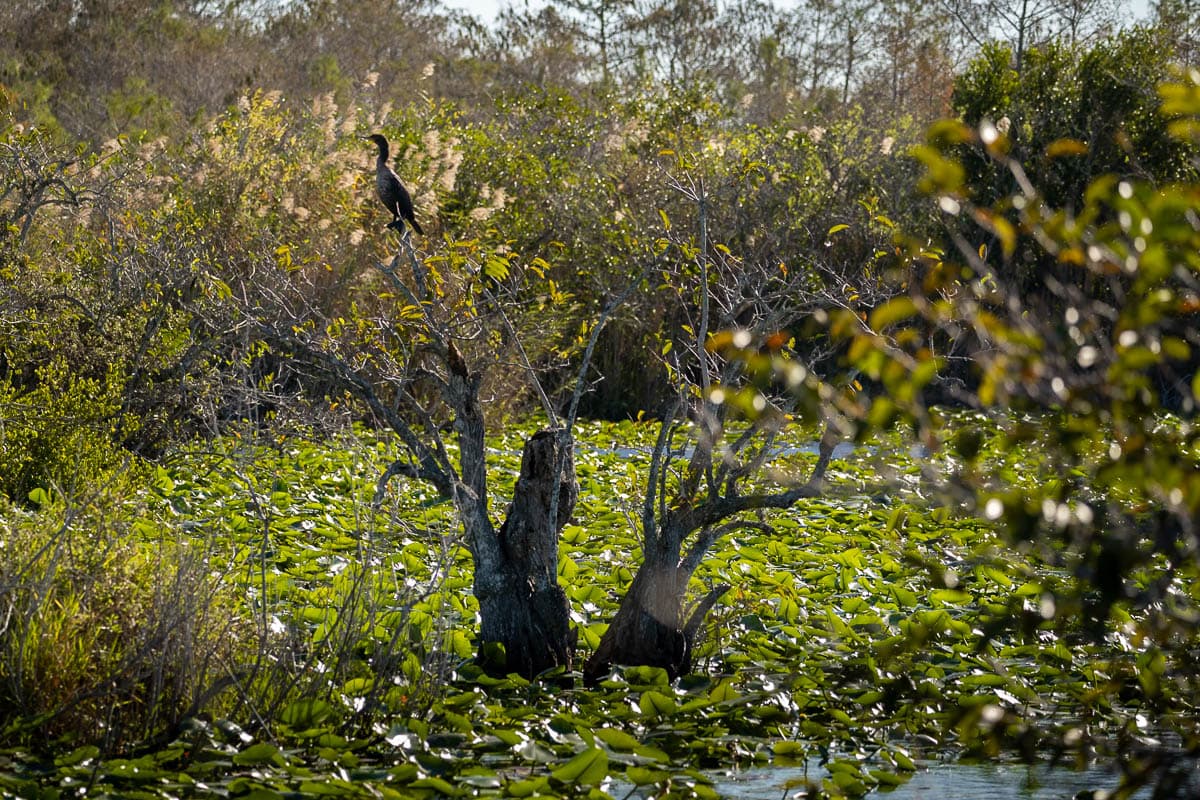
Along this trail, you’ll skirt around the edge of Taylor slough, a wetland full of lily pads, and then take a wooden boardwalk over its waters for different perspectives of the surrounding sawgrass prairie.
This short trail offers some incredible views of the Everglades’ unique beauty and is one of the best places in the park to see wildlife. While my husband, Justin, and I visited, we saw about five alligators, turtles, fish, and all kinds of wading birds, including the trail’s namesake, anhingas and white ibises.
2. Paddle Nine Mile Pond
If you’re up for something a bit more adventurous, consider kayaking or canoeing through Nine Mile Pond, which is one of the best places in the park to see alligators or even crocodiles.
There’s a large pond area that you can simply paddle around or, if you have more time, there’s a five mile loop trail through the mangroves, open glades, and sawgrass prairie, marked with white PVC pipes sticking out of the water.
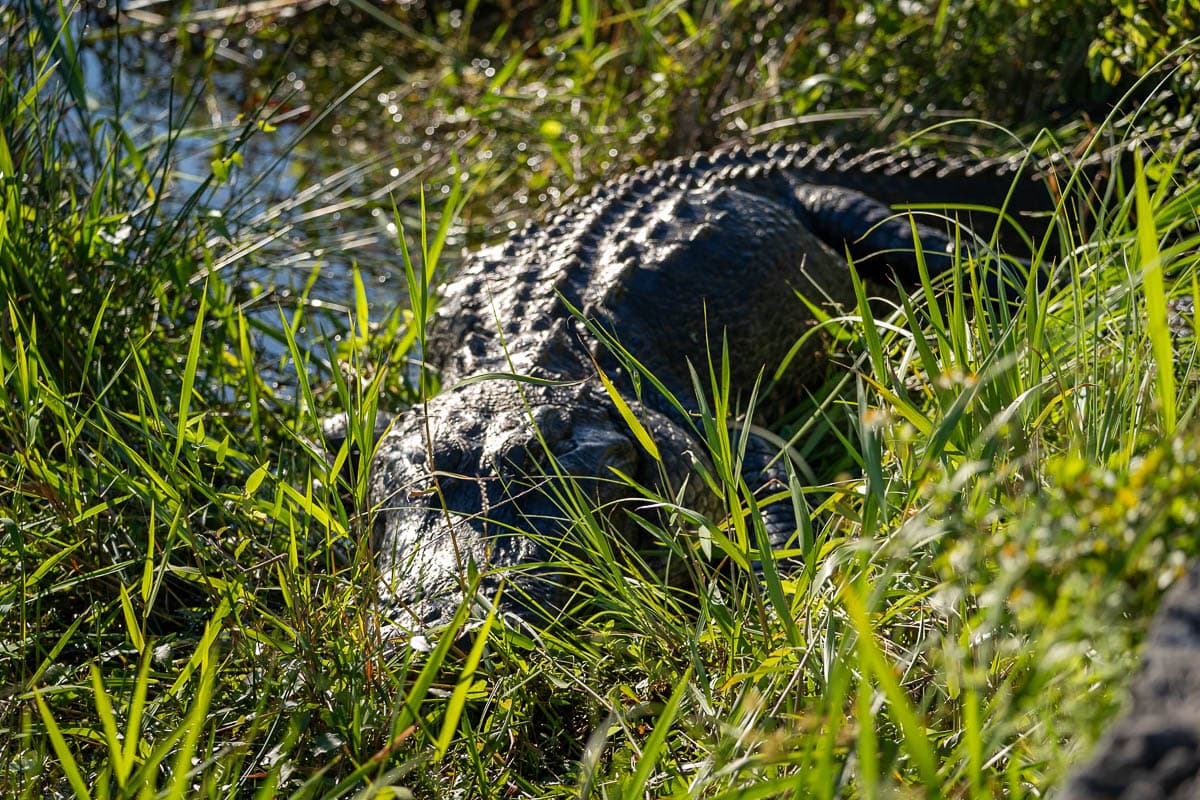
You’re free to use your own paddlecraft if you have it (motorized boats are not allowed) or, alternatively, you can pay for a rental at the Florida Marina and they will give you a key to unlock a rental canoe at Nine Mile Pond.
Justin and I had planned on doing the full-loop trail here in our trusty inflatable kayak, but after seeing how narrow the trail was around the mangroves (and how stabby they looked), taking our very poppable kayak through alligator-infested waters didn’t seem like the best idea. But we definitely plan to do the full loop next time we’re in the Everglades!
3. Take in the views at the Pa-Hay-Okee Lookout Tower
Pa-Ha-Okee Trail is a 0.2 mile wooden boardwalk that leads to a raised observation platform, overlooking the surrounding sawgrass prairie. This is an excellent place to see wading birds and smaller wildlife, like turtles or fish.
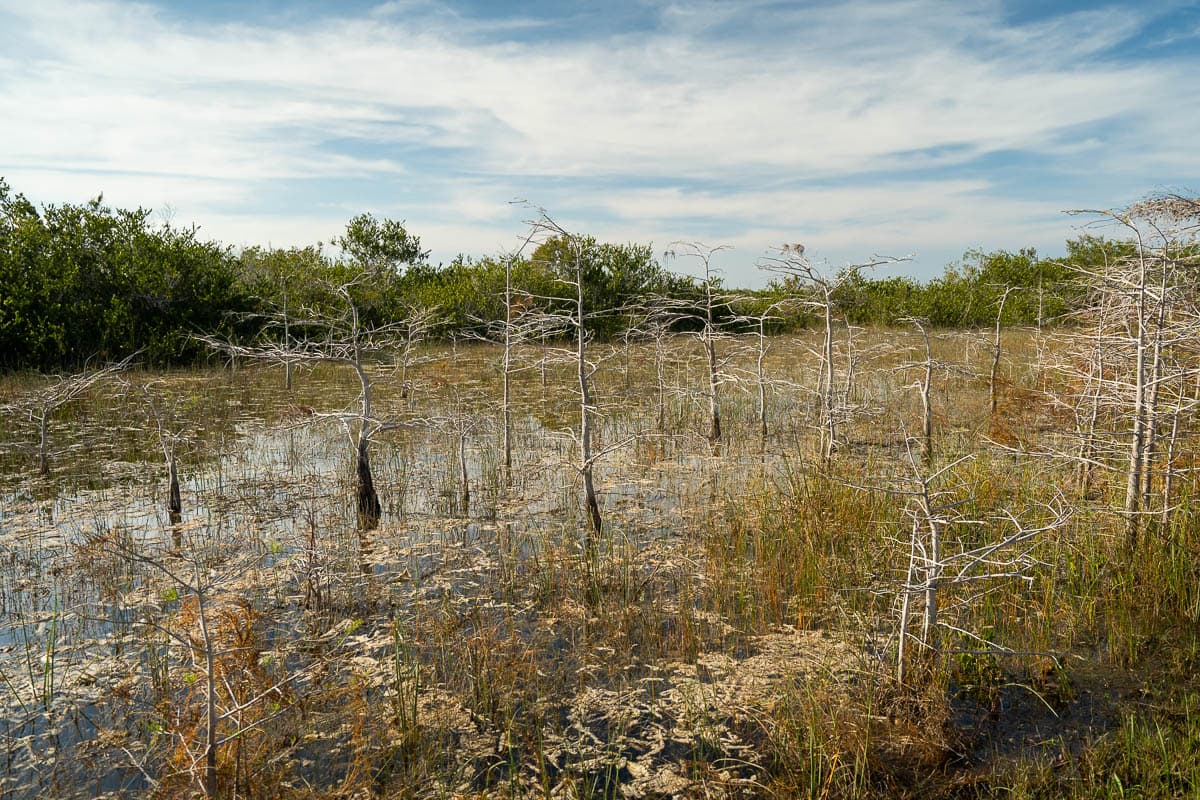
This stop is a must-do if you’re a birder, but otherwise, in full transparency, it wouldn’t be at the tippy top of my list of things to do in the park. That being said, it’s a short detour if you’re already exploring around the Royal Palm area. For example, it adds six minutes to your drive if you’re heading between the Anhinga Trail and Nine Mile Pond.
If you have limited time in the park, though, I’d feel free to skip this one!
Things to do in the Flamingo section
4. Look for wildlife at the Flamingo Marina
It’s worth heading to the Florida marina, where the Wilderness Waterway flows into the Florida Bay, whether or not you plan on going out in any boats. This is an excellent place to see wildlife—during our time there, we saw dozens of manatees, an alligator, and an American crocodile.

There’s also a nice visitor center, kayak and canoe rentals, and even guided boat tours, like this one, to help you get into the backcountry waters of the park to see even more wildlife, like dolphins.
5. Camp on a chickee
For a more unique adventure, consider heading out to stay at one of the Everglades’ 46 backcountry campsites, the vast majority of which are only accessible by water.
The park has three different types of campsites:
- Ground sites, which are on mounds of earth that are a few feet higher than the surrounding mangroves;
- Beach sites along the coastline; and
- Chickee sites, which are essentially raised wooden platforms, located directly in a river or waterway, with a roof over them.
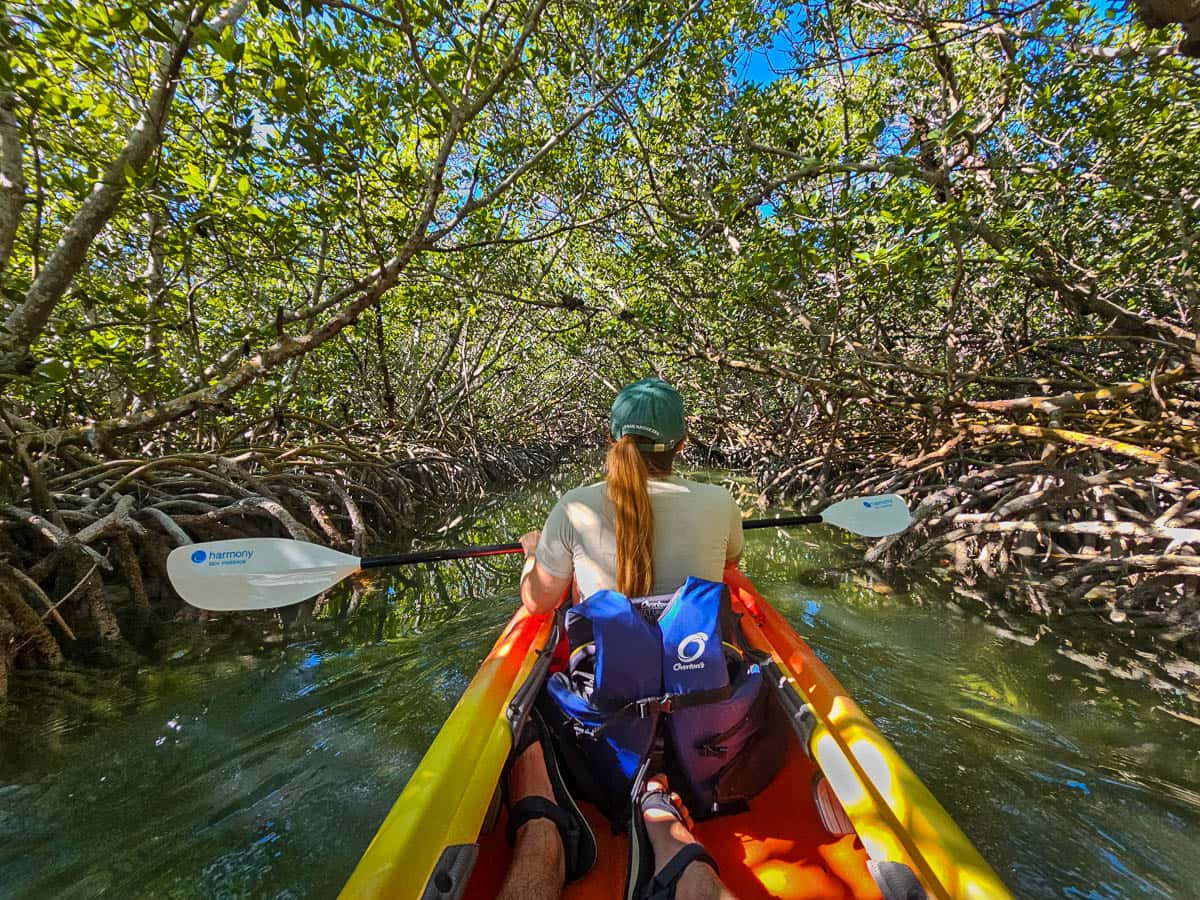
While we’re big fans of all backcountry experiences, camping on a chickee hut sounds SO COOL! It’s essentially like your own little overwater-bungalow, except, y’know, a LOT more rustic.
If you’re new to canoe camping, the Pearl Bay Chickee along the Hell’s Bay Canoe Trail is an excellent choice for beginners, with just a four-mile paddle (one-way) through red mangroves to the chickee. This is an awesome spot for seeing dolphins swim by!
Things to do in Shark Valley
6. Ride a bike along the Shark Valley trail
If you only have time to do one thing in Everglades National Park, my go-to recommendation is the Shark Valley bike ride, a flat, 15-mile trail that loops through a beautiful sawgrass prairie.
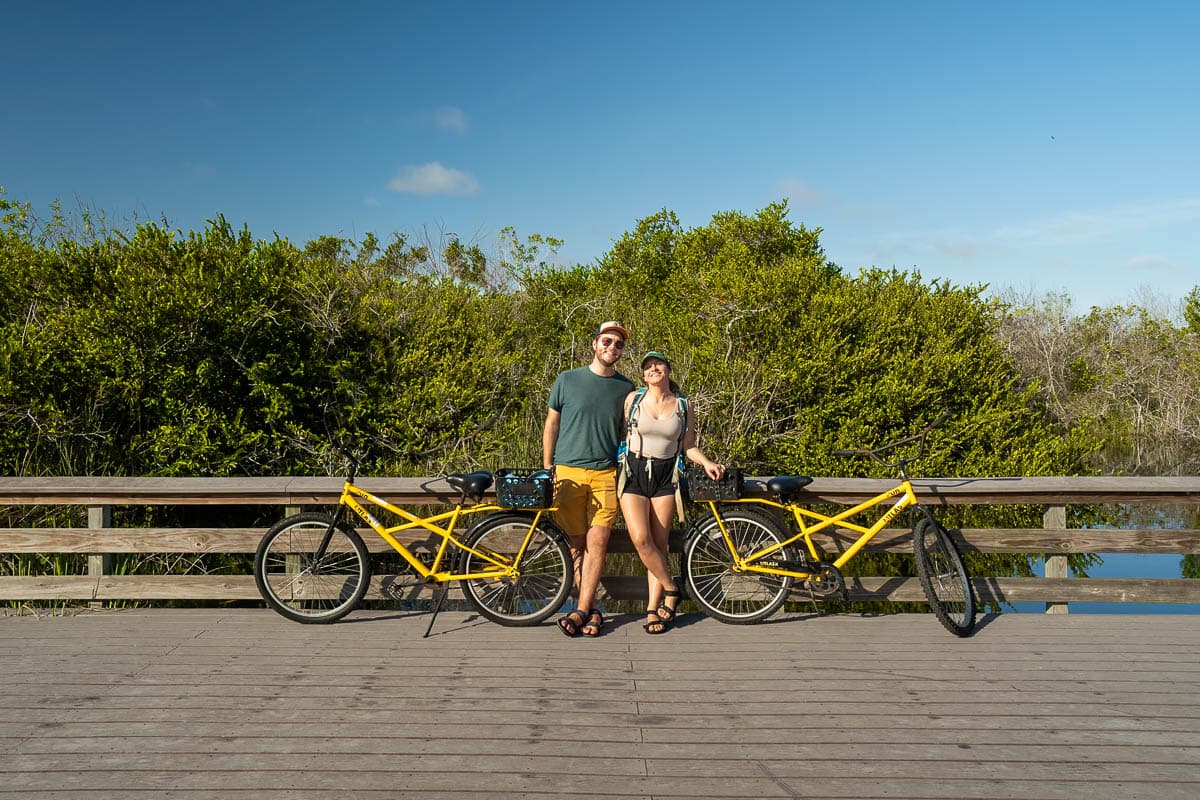
While you likely won’t see any sharks around this part of the Everglades, you are likely to see another pointy-toothed creature—alligators!
When Justin and I biked the trail, we saw at least 40 alligators, who were doing everything from swimming in nearby canals to just sitting smack dab in the middle of the pathway. While the alligators were definitely the highlight, we also saw plenty of wading birds, turtles, and fish along the way as well.
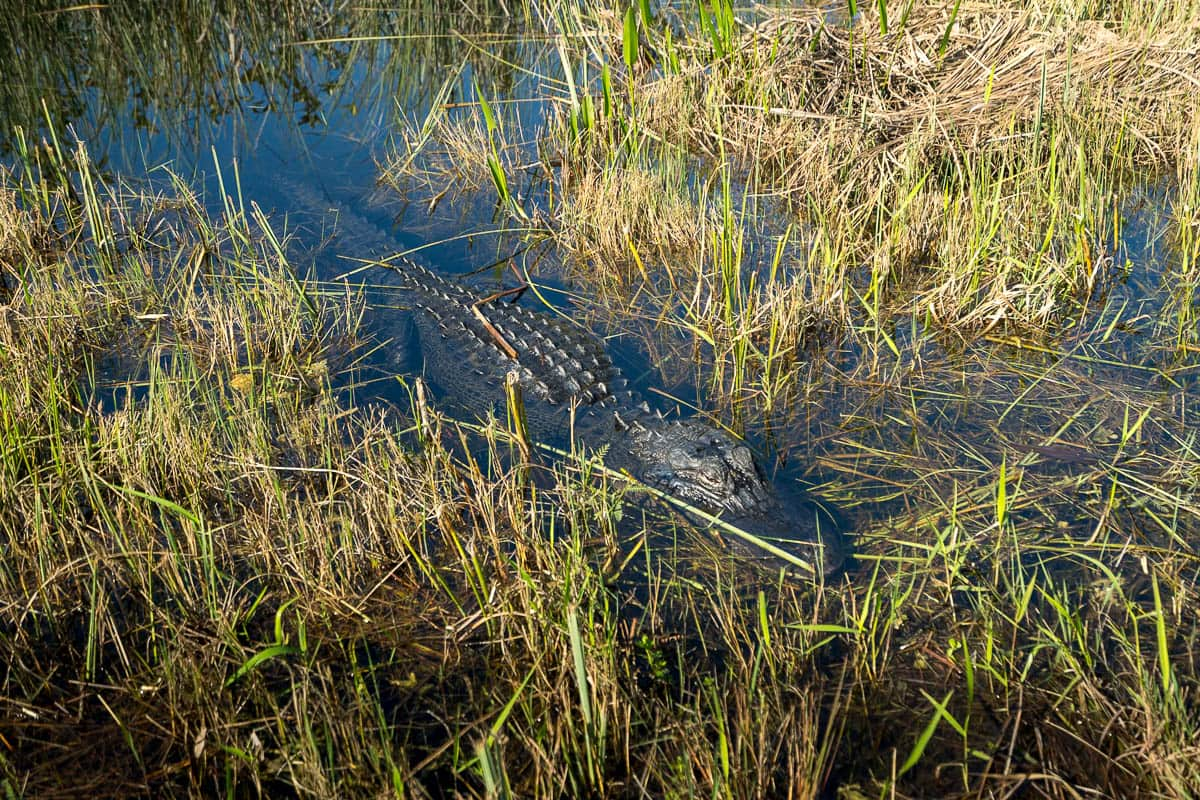
Beyond its wildlife, the trail is known for its Shark Valley Observation Tower, which, at 70 feet, is the tallest point in all of the Everglades. From the top of the tower, you have spectacular views across the sawgrass prairie and into the canal below, providing you a birds’ eye view of the animals swimming in it.
If you have your own bike, you’re free to use it on the trail, or there’s bikes available for rent from Shark Valley Tram Tours (for $26 per day), as well.
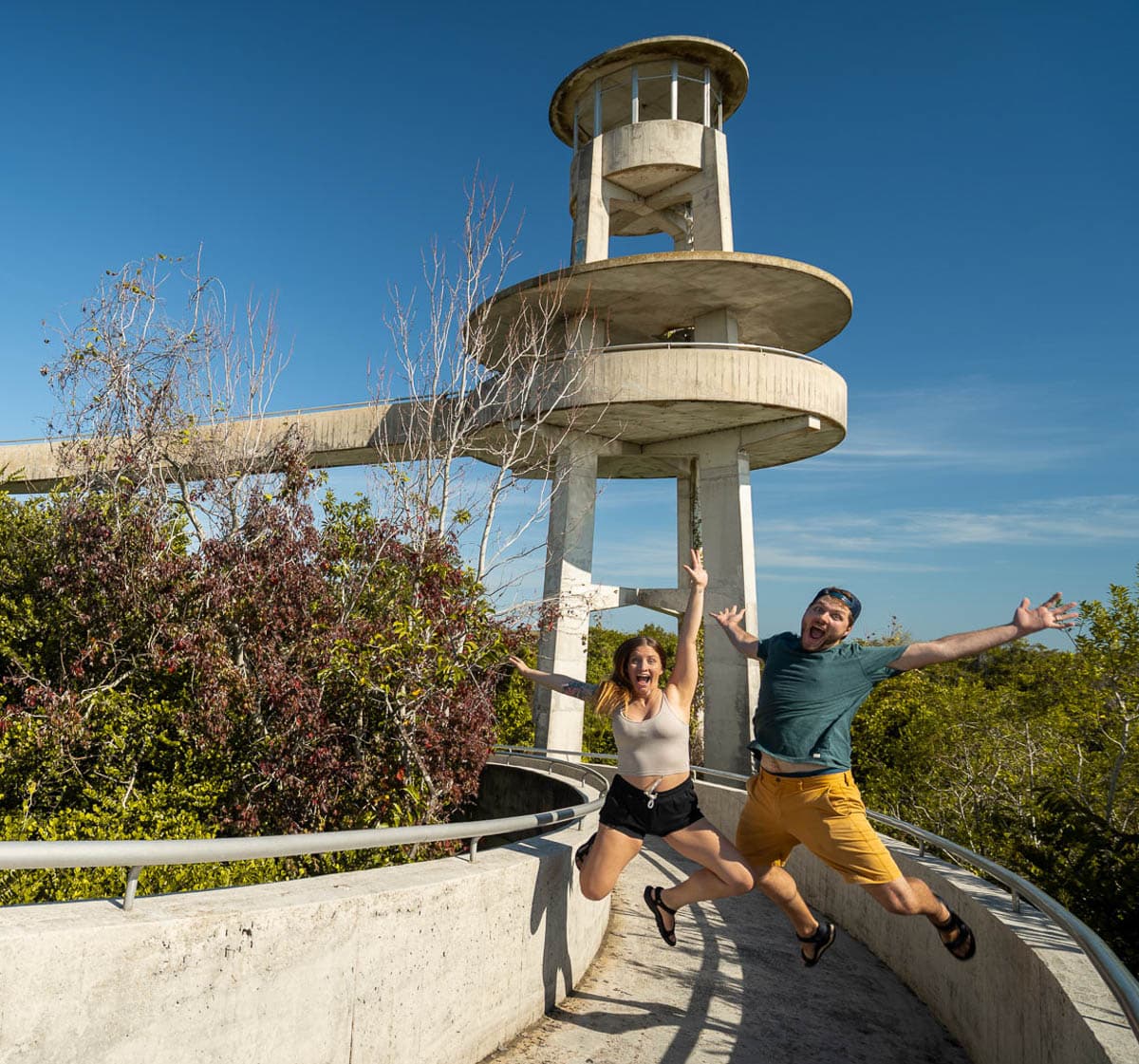
These tend to sell out pretty quickly, especially during the Everglades’ busy season, from December through April, so I’d recommend making your reservation online as far ahead of time as you can. If the rentals happen to be booked up during your visit, not to worry—they reserve a certain number of bikes to be available for walk-ups on a first come, first serve basis, but I’d definitely get here as soon as the Shark Valley gated entrance opens at 8:30 AM.
If you’re not into riding bikes, you can alternatively walk along the trail or join a two hour Shark Valley tram tour ($35 per person), where a ranger will give you a narrated tour of the loop.
7. Take an airboat tour
One of the most iconic things to do in the Everglades is take an airboat, a flat bottomed boat that is propelled by a huge, caged propeller at the back of the boat. These types of boats are ideal for waterways, like the Everglades, that are often too shallow for traditional submerged engines.
Not only will you get to see different types of scenery and learn about the ecosystem and conservation efforts to protect this unique place, but you’ll also have a good chance of seeing interesting wildlife, especially alligators. Better yet, while most of the alligators that you’ll see on land in the park just kind of lay there, you’ll have a much better chance of seeing alligators swimming or being a bit more active out on the water.
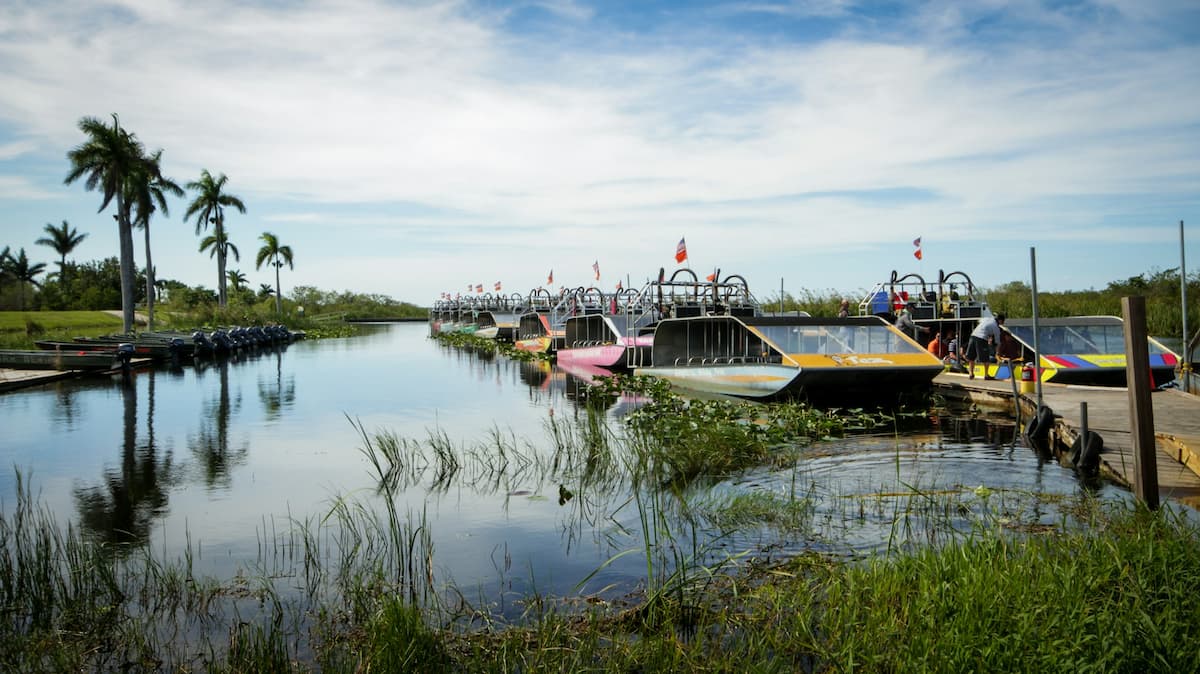
Most of the airboat operators are located right outside of the Shark Valley entrance of the Everglades, along Highway 41. There’s only three tour operators that are approved to work within the national park itself to limit the impact on its environment, namely Coopertown, Everglades Safari Park, and Gator Park.
Things to do in the Ten Thousand Islands section
8. Go out on a Ten Thousand Islands boat tour
Ten Thousand Islands National Wildlife Refuge, located inside the national park is a bit of a misnomer. There’s actually hundreds (not thousands) of small, uninhabited islands and mangrove islets found off the coast of southwest Florida.
Of course, the only way to truly explore this section of the park is to get out on the water.

Unless you happen to have a friend with a boat handy (hi, can you adopt me?), you’ll otherwise need to go on a guided tour with the only approved concessionaire in this section of the park, Everglades National Park Adventures, where you can learn more about its ecology, flora, and fauna from your guide.
Usually, there’s extremely limited boats in the wildlife refuge, so you’ll get to enjoy the unique beauty—and wildlife—in peace and quiet. Coastal birds, like ospreys and roseate spoonbills; manatees; and dolphins are regularly spotted here.
Things to do outside of Everglades National Park
9. Get a smoothie from Robert is Here
Okay, okay, so this one is cheating a teeny bit, because it’s technically outside of the national park. But did you even go to the Everglades if you didn’t stop at Robert is Here?
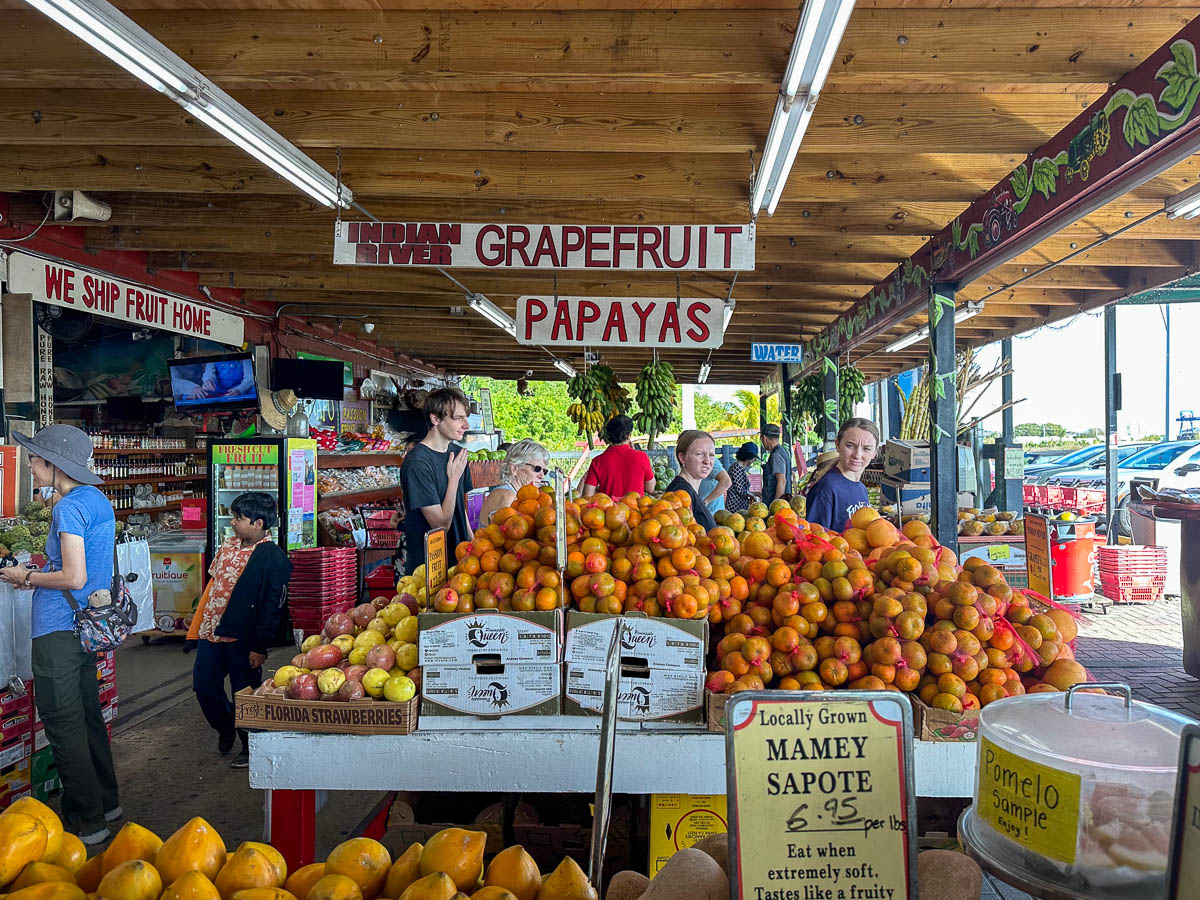
Robert is Here is a beloved locally-owned fruit stand that, since its opening in 1959, has become a must-stop destination for visitors to the Everglades or those heading out on a road trip to the Florida Keys. The popular stand is located in the town of Homestead, near the entrance for the Royal Palm and Flamingo sections of the park.
It sells typical fruits, like mangos and oranges, but also ones I’ve never heard of before, like mamey, sapodilla, black sapote, and canistel.
You can either just buy the fruits themselves or, alternatively, pick up to three fruits from a menu to mix into a milkshake or smoothie. They’re definitely on the pricier side ($10), but they’re large, DELICIOUS, and have become kind of a right-of-passage for Everglades visitors.
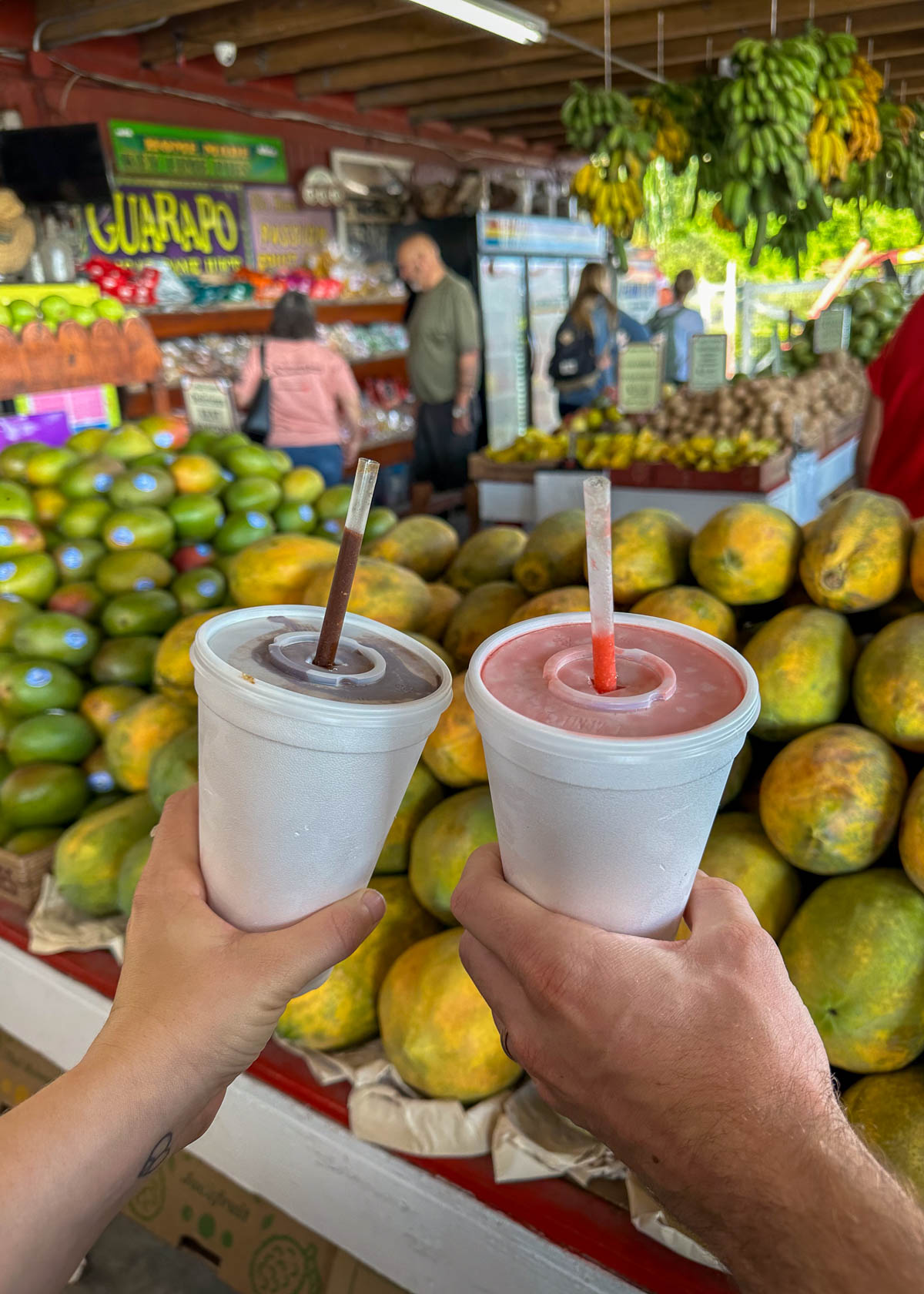
Justin and I camped in the park’s Long Pine Key Campground, near the Royal Palm entrance, for two weeks, and definitely stopped by Robert is Here more than once for breakfast!
How much time do you need in Everglades National Park?
Given the fact that the Everglades is HUGE, you should spend at least three days here if you want to explore each of its sections—one for Royal Palm and Flamingo; one for Shark Valley; and one for Ten Thousand Islands. Justin and I spent three full days exploring the National Park and still didn’t get to check everything off our bucket list.
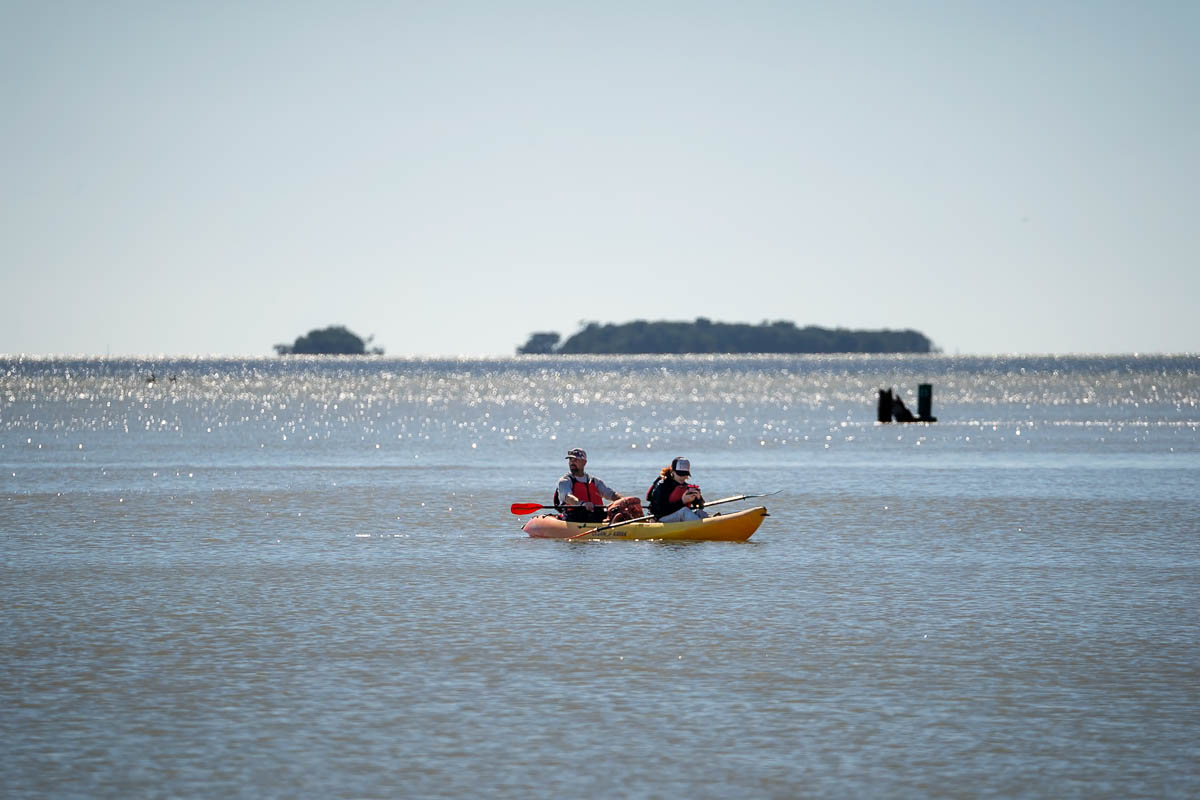
However, if you’re short on time, you can definitely see most of the park’s major highlights by squeezing in Shark Valley, Royal Palm, and Flamingo all in one (very long and busy!) day.
When to Visit Everglades National Park
The best time to visit the Everglades, by far, is from December through April, when the skies are mostly clear, the temperature is more moderate, and there’s less mosquitoes. This also happens to be the best time to see wildlife, especially gators, nesting birds, and manatees, in the park.
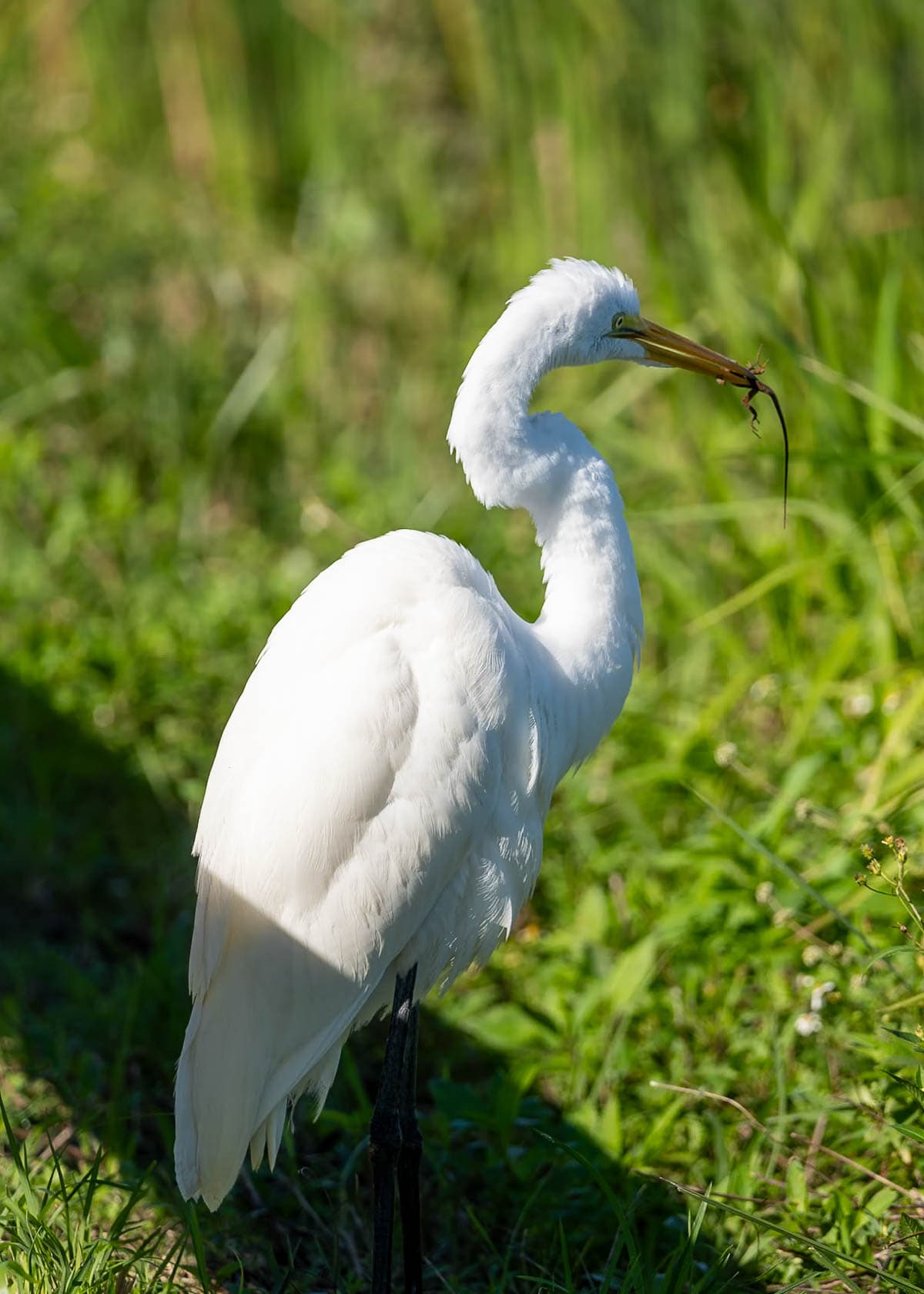
While this is the busiest time in the park, outside of this timeframe, the weather is often uncomfortably hot and humid (with the heat index exceeding 100 degrees), it’s usually way more rainy AND buggy, and it’s more challenging to see wildlife. Did I mention this also overlaps with hurricane season?
If you do visit during the warmer period, I’d strongly suggest trying to plan your activities in the early morning and late afternoon to beat the hottest part of the day. Also, be sure to pack sunscreen, bug spray, and plenty of water!
There you have it—all of the best things to do in Everglades National Park, one of the most unique and biodiverse places in the United States! Do you have any questions about visiting this unique place? Let us know in the comments below!

